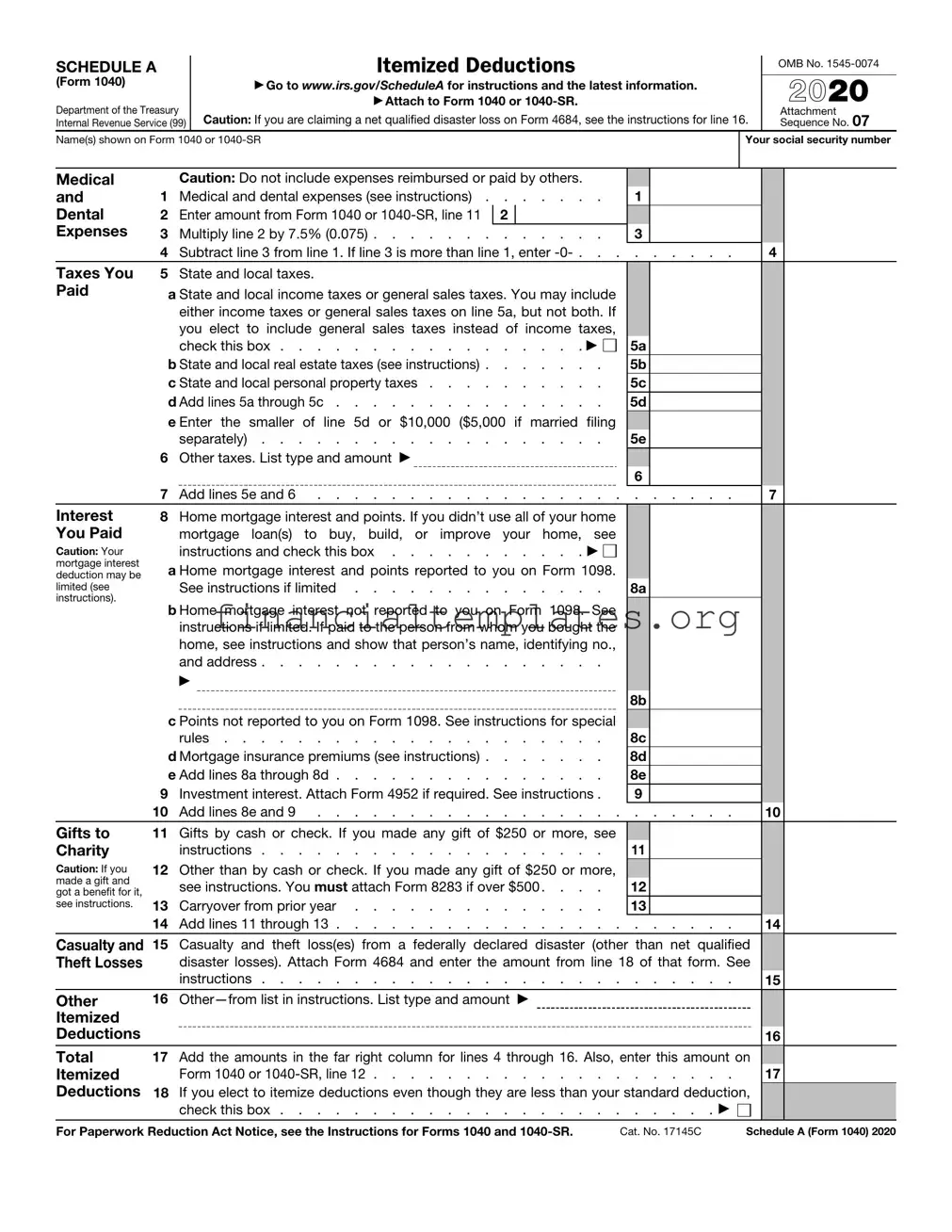The IRS Form 1040, also referred to as the U.S. Individual Income Tax Return, is closely related to Schedule A of the 1040 or 1040-SR forms in its function as a foundational document for personal tax filing in the United States. While Schedule A is used to itemize deductions that taxpayers can claim, the Form 1040 serves as the main form where taxpayers summarize their income, deductions, and credits to calculate their tax owed or refund due. Both forms work in conjunction to provide a comprehensive view of an individual's tax situation, but the Form 1040 acts as the "hub," linking various schedules and forms, including Schedule A, to present a full picture of the taxpayer's finances.
Form 1040EZ, which was a simplified version of the Form 1040, shares similarities with Schedule A in its aim to streamline the tax filing process for individuals with uncomplicated tax situations. Although the 1040EZ has been phased out and merged into a revised Form 1040, it historically catered to singles and married couples without dependents, with no itemizable deductions—which is what Schedule A is used for. The relationship between these forms highlights the evolution of tax filing from simplified processes to more inclusive methods that can cater to a wider range of financial scenarios.
The Schedule B form, titled "Interest and Ordinary Dividends," parallels Schedule A by focusing on specific types of income rather than deductions. Schedule B is used to report interest and dividend income in detail, which could be taxable or tax-exempt, and plays a significant role in the taxpayer's overall income calculation on Form 1040. Both Schedules A and B enhance the main tax return by providing detailed information crucial for accurate tax calculation, reflecting the comprehensive approach the IRS adopts in considering taxpayers' financial activities.
Schedule C is another complementary form to Schedule A, designed for sole proprietors and single-member LLCs to report profits or losses from a business they operate. While Schedule A facilitates the deduction of various personal expenses, Schedule C focuses on business-related financial activities. They serve similar purposes in ensuring taxpayers receive appropriate consideration for their expenses, yet they apply to distinctly different areas of a taxpayer's financial life—personal versus business.
Schedule D, "Capital Gains and Losses," is akin to Schedule A in that it deals with a specific aspect of financial matters—this time, the sale or exchange of capital assets. Where Schedule A is concerned with deductions for personal expenses, Schedule D calculates the tax implications of capital transactions, which can significantly affect the taxpayer's liability or refund on the Form 1040. Both forms are critical for accurately reporting financial activities that have tax consequences.
Schedule E, used for reporting income from rental property, royalties, partnerships, S corporations, estates, and trusts, shares a commonality with Schedule A through its impact on the taxpayer's overall tax situation. Schedule E focuses on supplemental income, which, much like the deductions on Schedule A, plays a crucial role in determining the taxpayer's taxable income and potential deductions. They both detail specific areas that contribute to the holistic assessment of an individual's tax responsibilities.
The IRS Form 8863, titled "Education Credits," relates to Schedule A as both enable taxpayers to claim specific expenses to reduce their taxable income—Schedule A through itemized deductions and Form 8863 through education credits. These documents are integral to the tax filing process, allowing individuals to benefit from their financial investments in personal, professional, or academic development. The goal of both forms is to alleviate the tax burden by acknowledging certain qualifying expenses.
Form 8962, "Premium Tax Credit," is part of the healthcare legislation aimed at making insurance more affordable for individuals with moderate incomes. This form correlates with Schedule A because it involves calculating the amount of premium tax credit individuals receive and reconciling it with any advance payments. Both forms have a financial impact on the taxpayer’s bottom line, focusing on reducing overall tax liability through different mechanisms—tax credits for healthcare costs on Form 8962 and deductions for varied personal expenses on Schedule A.
Last, Form 2441, "Child and Dependent Care Expenses," is somewhat similar to Schedule A because it allows taxpayers to claim a credit for expenses incurred in the care of a child or dependent, potentially lowering their tax liability. While Schedule A focuses on itemized deductions across a range of expenses, Form 2441 specializes in a specific subset of costs that benefit working parents and guardians. Both forms demonstrate the IRS's recognition of personal expenditures that impact a taxpayer’s financial health.

